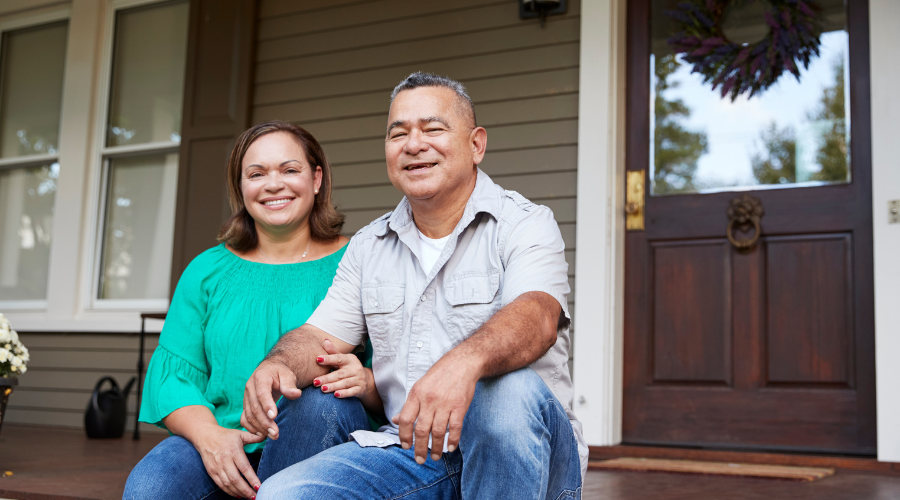Most Canadians want to stay in their homes for as long as possible after they retire. According to a new IPSOS survey commissioned by HomeEquity Bank, 90% of Canadians 45+ want to age in place.
In this article, we look at the benefits of aging in place, detail the resources you need, provide rough estimates of the costs involved, and suggest income sources to make aging in place in Canada possible.
What is aging in place?
Aging in place refers to the ability to live in your home safely, comfortably, and independently for as long as you are able. That means having access to the services, health care, and support you need to be secure and comfortable in your home.
The benefits of aging in place
Here’s a snapshot of the benefits of aging in place.
- You don’t have to downsize your home or your possessions.
- You get to enjoy the comfort and familiarity of your home.
- You determine your own schedule.
- You maintain your privacy and independence.
As mentioned previously, aging in place is a dream shared by more than 90% of Canadians. For those in or approaching retirement, the dream to age in place was brought into sharp focus by the pandemic, where the importance of home and remaining safe were amplified.
There are many advantages to aging in place. Being able to stay in your home keeps you rooted in your community and the memories you’ve made in your home. It also allows you to maintain your independence and not have to follow a mealtime or activity schedule. It often means being near family and friends. Engaging in the day-to-day activities that have provided meaning and fulfillment over the years can enrich your quality of life.
How to age in place:
Access to adequate resources such as but not limited to finances, healthcare, social and physical activities, and transportation are key to aging in place. And of course, safety is another important factor in aging in place. Taking the time to plan for your future will give you the best chance to age in place on your terms. Here are some of the considerations you’ll need to factor into your planning.
-
Take stock of your health.
Aging in place requires you to be responsible for yourself. If you are unable to take full care of your needs or your spouse’s needs, you may need to bring in assistance as needed, such as home care or personal support workers (PSWs). Typically, the older you get, the more you’ll need to access some form of personal care and support.
-
Aging in place remodeling.
You’ll need to ensure that your home fits your mobility needs today and as you get older.
- For instance, if your home includes winding stairs or steep inclines in the backyard, you may need to install a lift or ramp to help you navigate around your home. At the very least, you’ll probably require handrails.
- Installing a gate at the top of a high staircase can also protect you and your spouse.
- Making your shower fully accessible and installing grab bars in your bathrooms are also important considerations, as are installing slip-resistant flooring in your kitchen and bathrooms.
- You’ll also need to account for ongoing home maintenance, including cleaning, yard work, and snow clearance.
-
Get a professional consultation.
There are home safety specialists who can go through your home and help you catalog areas that need to be renovated. The Canada Mortgage and Housing Corporation (CMHC) provides a handy and comprehensive list of potential areas in your home that you need to fix or remodel to improve safety and accessibility.
-
Consider meal delivery.
As you get older, you may not always have the energy to cook every day. For those occasions, you might want to consider a meal delivery service catering to seniors or take advantage of food and grocery delivery services. Heart to Home Meals is just one organization that allows you to place an order for hearty, nutritious meals via online or phone orders.
-
Plan your transportation.
Think about the kinds of transportation you use now. Are you close to public transit? Is it accessible? Do you still drive? There may come a point when driving is no longer feasible. Think about alternate forms of transportation such as taxis or assisted transportation services.
-
Are you financially prepared to age in place?
Although aging in place is a dream shared by most Canadians, the financial costs can vary depending on how extensive your home remodeling is and how much you and your spouse will rely on support services as you age in place. That’s why it’s a good idea to start thinking about finances sooner rather than later. Do you have an emergency fund in place for unexpected health care costs and home renos? Are you maximizing your government pensions?
Aging in place checklist
Here is a comprehensive aging-in-place checklist for Canadian retirees:
Aging in place health care & social supports checklist
- I am aware of my family’s medical history and have talked with my doctor about what I can do to maintain my health.
- I have talked with my doctor about what services and supports I may need as I age.
- I keep my mind and body active with hobbies and regular exercise.
- I’m in contact with my family and maintain good relationships with them.
- I have friends I can rely on for support if needed.
Money management checklist
- I have thought about the kind of lifestyle I want in retirement.
- I have an emergency fund for unexpected expenses such as health care and home renovations.
- I have considered the kinds of support and services I may need as I age (for example, cleaning, shopping, yard maintenance, and personal care support).
- I have talked to a financial professional about how much money is required to sustain my lifestyle in retirement.
- I know about financial solutions to help me age in place, such as a reverse mortgage.
My home checklist
- My home is close to services, supports, friends, and family.
- I understand the safety risks in my home.
- I’ve worked with a professional to discuss and undertake any remodeling efforts that will be needed to support my mobility and health needs, and those of my spouse.
- I will make any changes as needed to help me age in place and make my home fully accessible.
Can I afford to age in place in Canada?
Costs to age in place in Canada will vary based on the condition of your home, your mobility needs, and the extent of remodeling needed to make your home safe and accessible. For instance, installing a few grab bars in the bathroom will set you back less than $100, while putting in a home elevator will run between $25,000 and $35,000, depending on the type of elevator and the number of floors served.
For most seniors, bathroom modifications will be one of the major outlays, as bathrooms are where most accidents occur. A full-scale bathroom reno will typically cost more between $12,000 – $40,000. Breaking that down, walk-in baths will run up to $25,000, while walk-in showers about half of that. Many companies and professionals will provide estimates based on your needs.
In terms of home services, personal support workers cost between $28-$35 per hour, while home nursing services will range between $45-$80 an hour. The costs do add up, but Canadian retirees may be eligible to recoup some of these costs through federal and provincial tax credits and grants that are designed to encourage Canadians to make their homes safer and more accessible. Your tax accountant will be able to provide more information.
Bottom line: aging in place with a reverse mortgage
Fortunately, there is a financial solution to help Canadians age comfortably in place and provide cash flow in retirement: The CHIP Reverse Mortgage from HomeEquity Bank. With this innovative financial solution, Canadian homeowners age 55+ can access up to 55%* of their home’s value in tax-free cash. You can choose to receive the funds either as a lump sum and/or in monthly or quarterly payments and use the funds for any of your expenses to help you age in place in Canada. Plus, monthly mortgage payments aren’t required until you move or sell your home, which frees up additional cash. Best of all, you get to age in place in the home you love.
Learn more about how a CHIP Reverse Mortgage works and/or call us toll-free at 1-866-522-2447 to see whether this solution can help you realize your dream of aging in place.
*Some conditions apply.
































